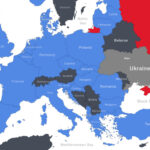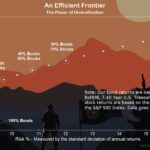The various cultures, affectations, and traditions contained in the United States make about as much sense combined as one nation as does the European Union. Which is to say: not much. An alien that descended and tried to form peoples into nations would have a hard time making an argument for the United States beyond geography.
One rejoinder to this is that no nation-state makes much sense when you really think about it. True, but not helpful to our purposes. If much of the conflict in the contemporary United States is due to the fact that the nation contains a wildly varied array of cultures and identities, saying it was always thus doesn’t itself fix the problem.
It’s also true to say that an awful lot of nation-building has helped mash the united states into the United States. From the hastily-assembled ideology that fueled the Spanish-American War and the conquest of the Philippines around the turn of the last century, to the horrible shared sacrifice of World War II, to our superpower blunders in Vietnam and Iraq, the farm hand in inland California and the hedge fund guy in Greenwich, Connecticut have been through a lot together. Or a lot of headlines, anyway.
Which leads us back to the subject of breaking up the United States. What would a redrawn map of North America look like?
The task has been taken up a number of times recently. Paul Starobin did so in 2009, and Colin Woodard did the same in 2012. What’s so striking is the extent of overlap of the various models of a pluralistic United States. Good chunks of Southern California, Arizona, New Mexico, and even Texas have more in common with Northern Mexico than with Boston.
Perhaps once you start breaking up the United States this becomes inevitable. It becomes so obvious that rural Nebraska and San Francisco are alien to one another; that Chicago and Miami are different; that New Orleans sits oddly with the Upper Plains, that you wonder why we began to take for granted that these parts combined to make up a whole at all.
While pondering your own map is both enticing and megalomaniacal (see below for a starter), the best way to start thinking about the problem might be the form of devolution. If the federal government somehow could be convinced to stop claiming authority down to the smallest matter across all 320 million of us, what would the devolved political arrangement look like?
Woodard’s United States.This is where the trouble starts. Most models would begin with some sort of confederation or union in which the (supra-)national government would still claim jurisdiction over issues like national defense. But with spoilers in the mix like nuclear weapons and Texas, it seems far-fetched that this solution could long survive. If you want to lose the better part of an afternoon, this exegesis from an Iraq veteran of what the second American Civil War would look like is as good a way to do so as any.
If there’s one thing the United States can still cooperate on, it’s blundering into pointless, ruinous wars, and it’s next to certain that any effort to break up the United States would produce such a conflict. As amusing and grotesque as the concept of Lena Dunham vs. Phil Robertson is on its own, put nuclear weapons into the mix and you really have a crime against humanity.
So it’s difficult to get this much further than the dorm room bong-session level of discussion. Recognizing the complexity and incongruity of the United States is the first step toward self-awareness. Realizing that the repulsive political factions we comprise might just deserve one another–or at least remain better than any plausible alternative–is almost certainly the second.
Read Part I here.





